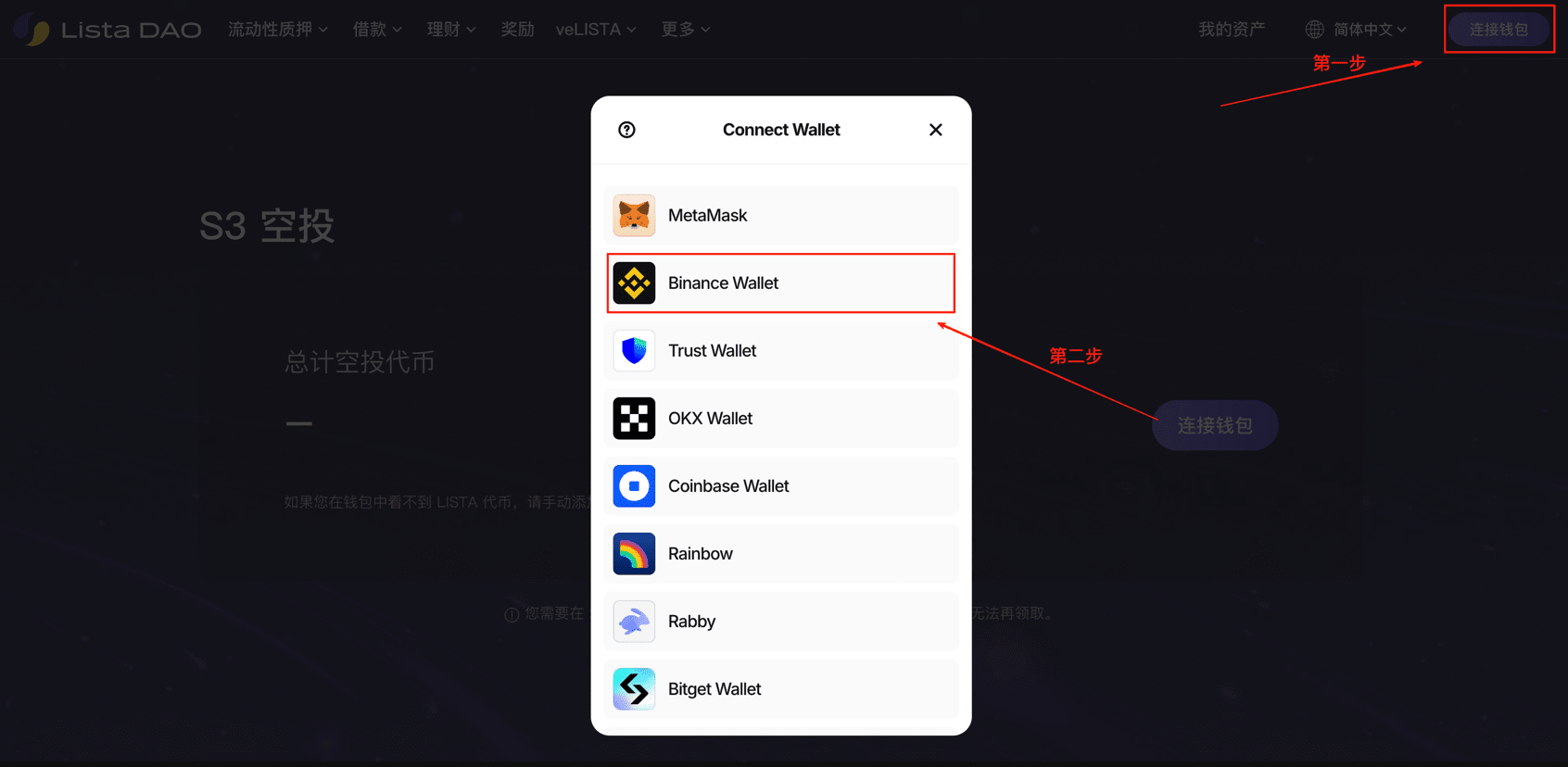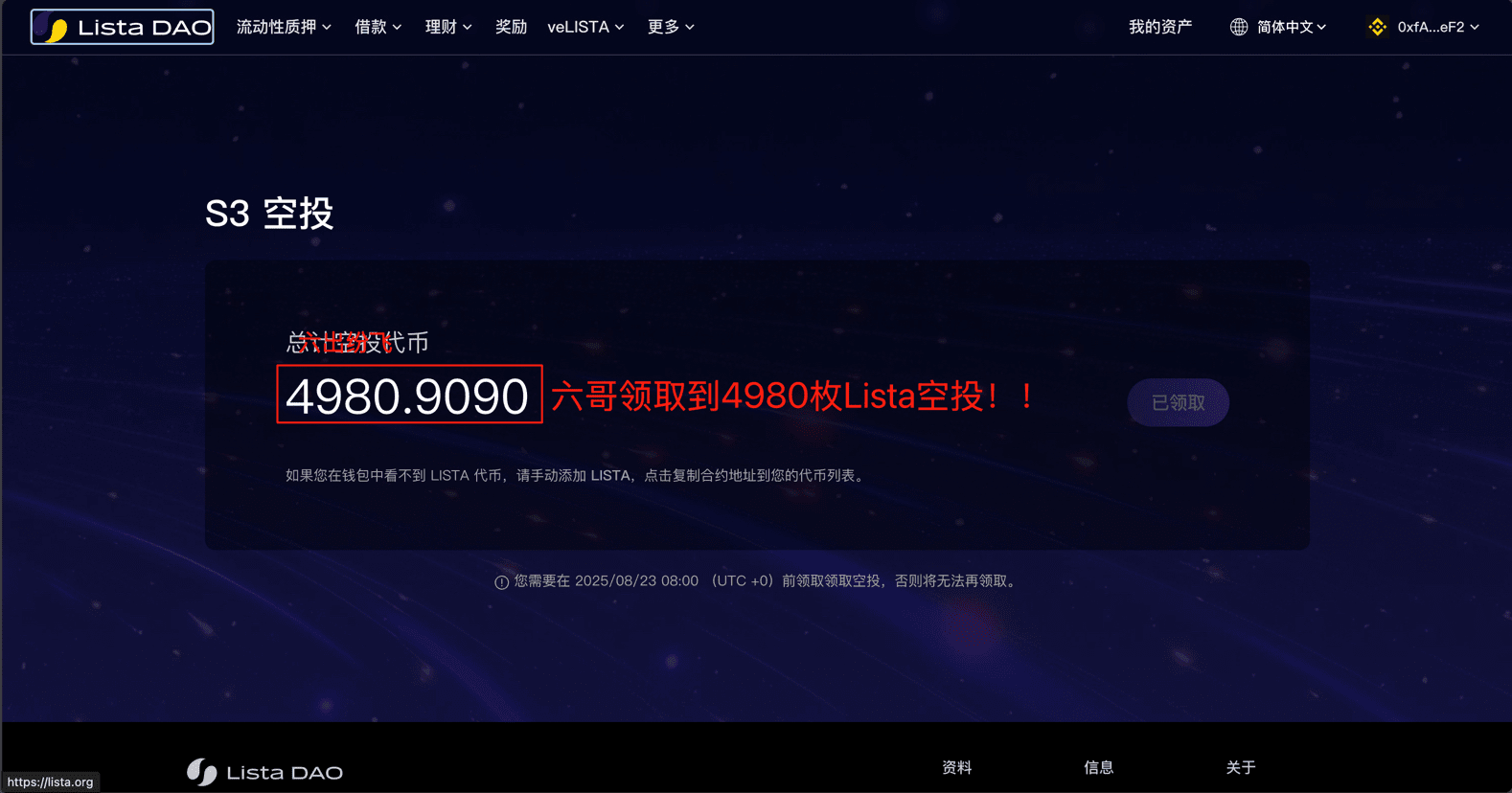I can't count how many times Lista has released airdrops. This wave of S3 third season airdrop activity is even more generous than the previous two! The deadline for claiming is August 23rd, so hurry and check the claiming tutorial below! Brother Liu directly received 4980 Lista tokens, worth 1350 USD!
Attention all token holders! The airdrop will end on August 23rd. Be sure to check if you have any airdrops, or it will be wasted!
1. Go to the Lista official website, lista.org/airdrop
2. Link your wallet in the upper right corner

Receiving 4980 Lista tokens was beyond my expectation; I initially thought two or three thousand would be plenty. Lista is indeed generous in this aspect!

Let me introduce Lista, which has burned 20% of its tokens, a long-term benefit!
Looking for a 'stable yet progressive' new entry? The on-chain liquidity of USD1 has already gained momentum. Lista DAO maximizes the efficiency of stablecoins and collateral assets: one end supports the USD1 issued by World Liberty Financial, while the other directs liquidity towards lending, market-making, and clearing networks, ensuring faster capital turnover and more controllable slippage and waiting times. For players pursuing replicable cash flow, this perfectly fills the gap of 'stable infrastructure + scalability'.
In the USD1 ecosystem (the signal for TVL breaking 100M has been lit), Lista DAO's strategic position resembles a 'liquidity distributor': firstly, standardizing multi-source collateral (such as high-quality LST/stablecoin positions) to reduce friction in issuance and redemption; secondly, quickly importing USD1 into mainstream scenarios (lending, perpetual margin, clearing capital pools) through routing and market-making modules, enhancing the unit liquidity reuse rate; thirdly, cross-chain and multi-protocol collaboration aims to complete the funding 'from minting to usage' within the same closed loop as much as possible, reducing on-route risks and costs. The core of this design is to engineer both stability and efficiency: providing risk control thresholds for upstream (collateral) and predictable depth and fee rates for downstream (usage scenarios).
On the token level, LISTA announced a 20% (200M) burn, which in the long term means compressing the value density brought by network growth 'back to the existing holders'. The significance of the burn lies not only in nominal deflation but also in binding protocol revenue, ecological incentives, and governance weight together: as TVL and usage increase, the fees and incentives return to secure safety and development, and governance allocates resources to 'truly needed' scenarios, avoiding meaningless narratives. Only when the deflation curve overlaps with real usage can verifiable value capture occur.
In the path where TVL breaks through 3 billion, the competitiveness of Lista DAO is reflected in three points: First, the risk framework and collateral pool structure are more 'anti-fragile' (decentralized, discounted, and retrievable liquidation thresholds); second, the supply and scheduling of cross-domain liquidity have become 'infrastructure', reducing the awkwardness of market-making and clearing networks that lack depth at critical moments; third, the threshold for development and ecological collaboration is low—standardized interfaces, clear incentives, and clearing paths lower integration and maintenance costs. Looking forward to the upward phase, we can continue to observe four hard indicators: USD1 minting/redeeming delay and failure rate, core protocol USD1 depth and turnover rate, LISTA burn/buyback progress and fee ratio, governance participation and proposal approval efficiency—when these curves improve in sync, the dual wheels of 'stable ticket interest + scalable applications' can be considered truly realized.

